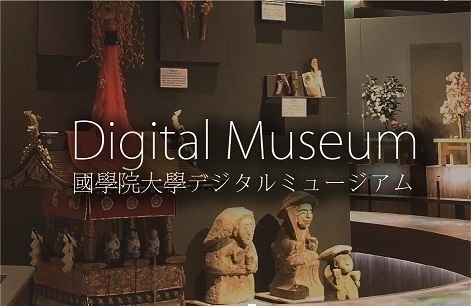- トップ
- Encyclopedia of Shinto
- Sendaikujihongitaiseikyō
Encyclopedia of Shinto
| Main Menu: | |
| Links: |
詳細表示 (Complete Article)
| カテゴリー1: | 9. Texts and Sources |
|---|---|
| カテゴリー2: | Other Basic Texts |
| Title | Sendaikujihongitaiseikyō |
| Text | This is a Shinto work attributed to Shōtoku Taishi that expounds on the commonality of the three doctrines of Shinto, Confucianism, and Buddhism. It is compiled in seventy-two volumes, with a preface and a table of contents (divided into thirty-eight volumes called the main portion, and thirty-four volumes being labeled the auxiliary portion). The title is abbreviated as Kuji taiseikyō. It is said to have been compiled by Shaku Chō'on, and was published between the years of 1676 and 1679 (This is the Takano version of the manuscript—a Nagano manuscript and a Sasaki manuscript also exist). The proper part is the hongi, being a historical account of the emperors down to Suiko, which is modeled after the structure of Sendai kuji hongi. The auxiliary part, kyōgyō hongi, records various doctrines peculiar to the Aji family and their Reigen Shintō. Among these is the "Kenpō hongi," which includes the seventeen-article constitution for each of the following five: for the general public, for politicians, for Confucian scholars, for Shintō officials, and for Buddhist officials. In the portion for the general public, which corresponds largely with the seventeen-article constitution found in Nihon shoki, the three treasures, which Nihon shoki interprets to be the Buddha, the Buddhist teachings, and the monastic community, is changed in this work into the three teaching of Confucianism, Buddhism, and Shinto; thus diluting the influence of Buddhism, and emphasizing the correlation of Shintō and Confucianism. Along with the biography in of Shōtoku Taishi in "Seinō hongi," the main objective of this work is to show that Shōtoku Taishi, in introducing the constitution, attempted to explain that three teachings are one. However, in 1681 the so-called "Taiseikyō Incident" occurred, and the shogunal government declared the book a forbidden work, and the wooden printing blocks were destroyed. It was assumed that those involved in the production and publishing of the work were Nagano Uneme, Chō'on Dōkai, an official at the Izawanomiya Shrine, and a publisher, Tojimaya Sōbe'e, and these individuals met with exile. The direct cause of the problem was the theory in the book which stated that the Izawanomiya Shrine of Shima Province, which is a branch shrine of Ise Jingū, was in actuality the original shrine of Amaterasu Ōmikami. This conflicting theory came to the surface in the early days of the Edo Period through the movement to restore shrine lands (shinryō) to their original shrines championed by the officials at the Izawanomiya Shrine. It is believed that this movement was based on the record Izawanomiya kyūki which contained the seeds of the idea that the inner shrine of Izawanomiya should be independent. This matter should have been laid to rest when, in the 1662, the imperial court denounced this theory, but when kuji taiseikyo was published it resurfaced causing Ise to file a petition with the imperial court and the shogunal government. Because kuji taiseikyo contains many sections that conflict with the records of Nihon shoki and Kojiki and other classics, famous scholars of the kokugaku (National Learning) and investigative schools repeatedly rejected the suggestion that kuji taiseikyō was the oldest record, kept secret at the order of the emperor (who received and represented the will of the kami). However, even after the book was banned, the support of some monks who belonged to the tradition of the three ways (Confucianism, Buddhism, and Shintō) as one common way did not fade, and the belief in hifumi songs and so forth (see jindai moji) continued to spread. Nagano Uneme (1616-1687), who authorities believe was responsible for the production of the work, was a descendant of the Minowa Castle lord of Jōshū (Hitachi), and was known as one who had inherited the theories of the three ways as recorded in Mononobe no kaden (the family traditions of the Mononobe, or Mononobe Shintō). He also possessed the Nagano manuscript of kuji taiseikyō which is said to have come from Ise Shrine. Uneme was well known among Buddhists and the aristocracy, and Ninchō Ōshō (1645-1711) of Jōdoshū (the Pure Land Buddhist sect) learned about Shintō from Uneme. Chō'on Dōkai (1628-1695) was a Zen priest of the Ōbaku sect, born in Hizen Province, and received support from the fifth shōgun, Tokugawa Tsunayoshi, and his wife, Keishōin, and because of this when the Taiseikyō Incident occurred, he was able to avoid stricter punishment, such as banishment. After the incident he moved to Kurotaki in Jōshū (Niigata) and continued to work as a Zen priest of the Ōbaku school, and became the founder of the Kurotaki branch. In Uneme's case, there is a connection with the legend of Izawanomiya and some interaction with the officials (jinin) of the shrine, but Chō'on himself denied this. — Mori Mizue |




